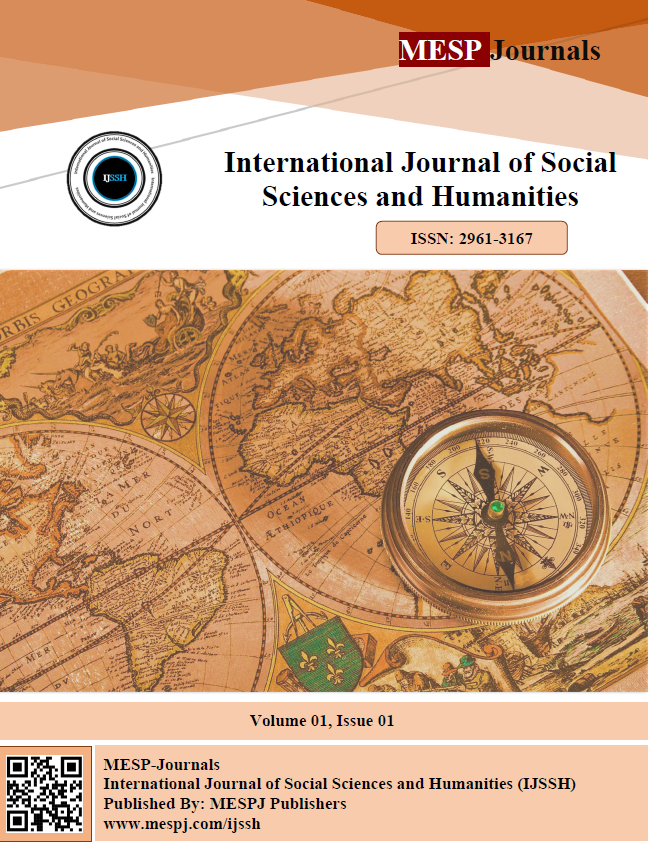Examining Cambodian Literal Structuralisms, Ideologies and Social Moralities: A Case Study of Tom Teav Novel
DOI:
https://doi.org/10.56981/S511Keywords:
Cambodian novels, Structuralism, Inferential Ideologies, Moralities, LiteratureAbstract
This study was geared to explore the Khmer novel and folktale structuralisms and investigate the implicit ideological inferences, and social moralities by qualitative elaborations. One Khmer folktale and two novels from the national curriculum syllabi of grade 10 were opted for this study. As a result, the characteristics of the Khmer folktale framework of literature consisted of three distinguishing main parts: introduction, body, and ending sections while the implied ideologies were found differently from one to another and abreast with time shifts. What we can learn from those social moralities were thriving or deteriorating. Upon the systematically archival method, “Tum and Teav” is a poignant exploration of the conflict between personal desires and societal expectations set against a backdrop of love, duty, and deception. The narrative centers on Tum, a monk who falls in love with Teav, a woman constrained by familial and social obligations. Their relationship, marked by genuine affection, contrasts sharply with the manipulative actions of Teav’s mother and Or Chun, who represent societal pressure and deceit. The story delves into themes of freedom versus confinement, individual desires versus societal norms, and the ethical dilemmas of honesty versus deception. Through its rich cultural symbols—such as the pagoda and the royal palace—the narrative illustrates the struggles of navigating personal happiness within the rigid frameworks of authority and tradition. The underlying ideology advocates for personal fulfillment and authenticity, challenging the constraints imposed by societal and familial duties.
References
1. Aciman, A. (2007). Call me by your name. Farrar, Straus and Giroux.
2. Austen, J. (1813). Pride and prejudice. T. Egerton.
3. Brontë, C. (1847). Jane Eyre. Smith, Elder & Co.
4. Brontë, E. (1847). Wuthering Heights. Thomas Cautley Newby.
5. Carlino, R. (2015). Before we were strangers. Atria Books.
6. Chbosky, S. (1999). The perks of being a wallflower. Pocket Books.
7. Culler, J. (2002). Structuralist poetics: Structuralism, linguistics and the study of literature (Original work published 1975). Routledge.
8. De Saussure, F. (1974). Course in general linguistics (W. Baskin, Trans.; J. Culler, Intro.). Fontana/Collins. (Original work published 1915)
9. Fitzgerald, F. S. (1925). The great Gatsby. Charles Scribner's Sons.
10. Flaubert, G. (1857). Madame Bovary. Revue de Paris.
11. Goethe, J. W. von. (1774). The sorrows of young Werther. Weygand’s Che Buchhandlung.
12. Green, J. (2012). The fault in our stars. Dutton Books.
13. Hab An, Leang. (1996). ការសិក្សាអត្ថបទ [The studies of texts]. Seung Heng's.
14. Hannah, K. (2015). The nightingale. St. Martin's Press.
15. Hawthorne, N. (1850). The scarlet letter. Ticknor, Reed & Fields.
16. Hosseini, K. (2007). A thousand splendid suns. Riverhead Books.
17. Hugo, V. (1831). The hunchback of Notre-Dame. Gosselin.
18. Ishiguro, K. (2005). Never let me go. Alfred A. Knopf.
19. Jakobson, R. (1960). Linguistics and poetics. In T. Sebeok (Ed.), Style in language (pp. 350–377). MIT Press.
20. Jones, A. (2020). Conflicts between personal desires and societal expectations in contemporary literature. University Press.
21. Kumar, R. (2018). Love and duty: Thematic tensions in classic narratives. Literary Review.
22. Lee, M. (2019). Navigating authenticity in restrictive societies: A comparative analysis. Journal of Cultural Studies.
23. Lotman, Y. (1976). The analysis of the poetic text (D. B. Johnson, Ed. & Trans.). Ardis. (Original work published 1972)
24. McQuiston, C. (2019). Red, white & royal blue. St. Martin's Griffin.
25. Mitchell, M. (1936). Gone with the wind. Macmillan Publishers.
26. Morgenstern, E. (2011). The night circus. Doubleday.
27. Moriarty, L. (2014). Big little lies. Putnam's Sons.
28. Moyes, J. (2012). Me before you. Michael Joseph.
29. Murasaki Shikibu. (11th century). The tale of Genji. Public Domain.
30. Ngea, T. (1974). អរិយធម៌ខ្មែរ [Khmer civilization]. Informally translated. Phnom Penh.
31. Nicholls, D. (2009). One day. Hodder & Stoughton.
32. Niffenegger, A. (2003). The time traveler’s wife. MacAdam/Cage.
33. Niven, J. (2015). All the bright places. Alfred A. Knopf.
34. Ondaatje, M. (1992). The English patient. McClelland & Stewart.
35. Pasternak, B. (1957). Doctor Zhivago. Feltrinelli.
36. Propp, V. (1968). The morphology of the folktale (L. Scott, Trans.; S. Pirkova-Jakobson, Intro., Rev. ed.). University of Texas Press. (Original work published 1958)
37. Raman, S., Widdowson, P., & Brooker, P. (2005). A reader's guide to contemporary literary theory (5th ed.). Routledge.
38. Rooney, S. (2018). Normal people. Faber & Faber.
39. Rowell, R. (2013). Eleanor & Park. St. Martin's Press.
40. Santopolo, J. (2017). The light we lost. G.P. Putnam's Sons.
41. Shakespeare, W. (1597). Romeo and Juliet. The Shakespeare Head Press.
42. Shakespeare, W. (1603). Othello. The Shakespeare Head Press.
43. Shakespeare, W. (1606). Antony and Cleopatra. The Shakespeare Head Press.
44. Smith, J. (2021). Deception and manipulation: The role of antagonists in romantic conflicts. Academic Press.
45. Sparks, N. (1996). The notebook. Warner Books.
46. Sparks, N. (1999). A walk to remember. Warner Books.
47. Taghizadeh, A. (2013). Theory and practice in language studies. Theory and Practice in Language Studies, Finland.
48. Tolstoy, L. (1877). Anna Karenina. The Russian Messenger.
49. Yoon, N. (2016). The sun is also a star. Delacorte Press
Downloads
Published
Issue
Section
License
Copyright (c) 2025 Journals International Journal of Social Sciences and Humanities

This work is licensed under a Creative Commons Attribution-NonCommercial-NoDerivatives 4.0 International License.




